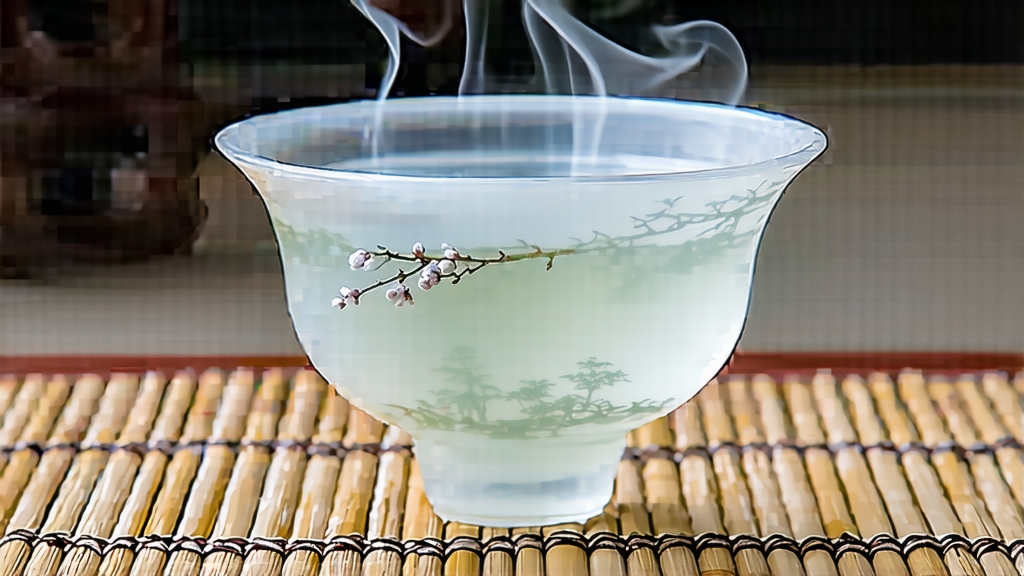
In the hushed hour before sunrise, when the Wuyi foothills are still lacquered with night dew, tea pickers climb the granite terraces of Fuding carrying wicker baskets lined with fresh banana leaves. They are searching for only two things: tomorrow’s memory and today’s perfect bud. What they pluck before the mountain warms is the sole ingredient of Bai Hao Yin Zhen—White Hair Silver Needle—the most aristocratic expression of China’s white-tea family. To international drinkers the name may sound like a line of poetry; to Chinese tea elders it is liquid moonlight, a sip that can hush a banquet hall.
History: From Imperial Tribute to Global Minimalism
White tea as a category enters written records during the Song dynasty (960-1279), yet Bai Hao Yin Zhen’s individual legend begins in 1796, when a Fuding magistrate ordered the first pure-bud tribute for the Jiaqing Emperor. Only the newly opened “big white” cultivar (Da Bai Hao) satisfied the throne’s demand for needle-shaped buds whose downy hairs glittered like frost under candlelight. For the next century the tea vanished behind palace walls; farmers reserved imperfect leaves for themselves, inadvertently creating lower-grade white teas such as Bai Mu Dan and Shou Mei. When the last Qing emperor abdicated in 1912, palace tea masters returned to Fujian, bringing imperial processing secrets with them. By the 1920s Silver Needle was already sailing from Fuzhou port to British tea salons, where it was marketed as “Chinese Champagne” for its sparkling infusion. The 21st-century wellness wave finally carried the tea beyond connoisseur circles, turning these once-exclusive buds into a minimalist icon whose quiet flavour fits Nordic cafés and California yoga studios alike.
Cultivar & Terroir: Why Fuding’s Granite Breath Matters
Authentic Bai Hao Yin Zhen is forged from two local clones—Fuding Da Bai Hao and the even larger Fuding Da Hao—whose buds can reach 3.5 cm in early spring. The bushes thrive on acidic, well-drained lateritic soil born from weathered granite. Because Fuding lies at 27° N latitude, the plants enter winter dormancy slowly, storing amino acids that translate into sweet, soy-sauce-like umami. More decisive is the maritime influence: East China Sea fog drifts inland at night, wrapping buds in a 90 % humidity blanket that encourages long, tender growth. Neighbouring Zhenghe county produces a respectable needle, but its higher elevation and basalt soil yield a slightly woodier cup; purists insist the “sea breath” of Fuding cannot be replicated.
Harvest Calendar: One Dawn, One Standard
The picking window opens when the last spring frost retreats and the first apical bud achieves a “hawk-beak” curve—usually between 15 March and 5 April, lasting barely twenty days. Pickers obey a ruthless trinity: no bud longer than 2.5 cm, no open second leaf, no rain-wet down. A skilled woman can gather 2,000 buds per hour, yet 30,000 buds (roughly 1.2 kg fresh) shrink to a single finished kilo. To prevent oxidation before withering, baskets are shaded with wet muslin and rushed to the village barn within two hours.
Craft: The Art of Doing Almost Nothing
White tea’s minimalism is deceptive; the craft lies in orchestrating nature without visible intervention. Once in the barn, buds are spread one layer thick on bamboo trays woven from two-year-old mao zhu. For the next 46–56 hours they undergo two simultaneous processes:
- Enzymatic oxidation—never “fermentation”—driven by endogenous polyphenol oxidase.
- Hydrolysis, in which proteins break into free amino acids, creating sweetness.
Masters control only two variables: air and time. Indoor withering (28 °C, 65 % RH) lasts until the bud feels leather-soft; then trays are moved outside for a final “sun kiss” of 20–40 minutes at dawn when UV index is below 4, preserving L-theanine and preventing grassy notes. No rolling, no pan-firing, no baking—only a gentle 40 °C bake for 15 minutes to reach 8 % moisture, followed by a month-long “sleep” in paper-lined wooden boxes so residual moisture equalises. The finished needle should be the colour of